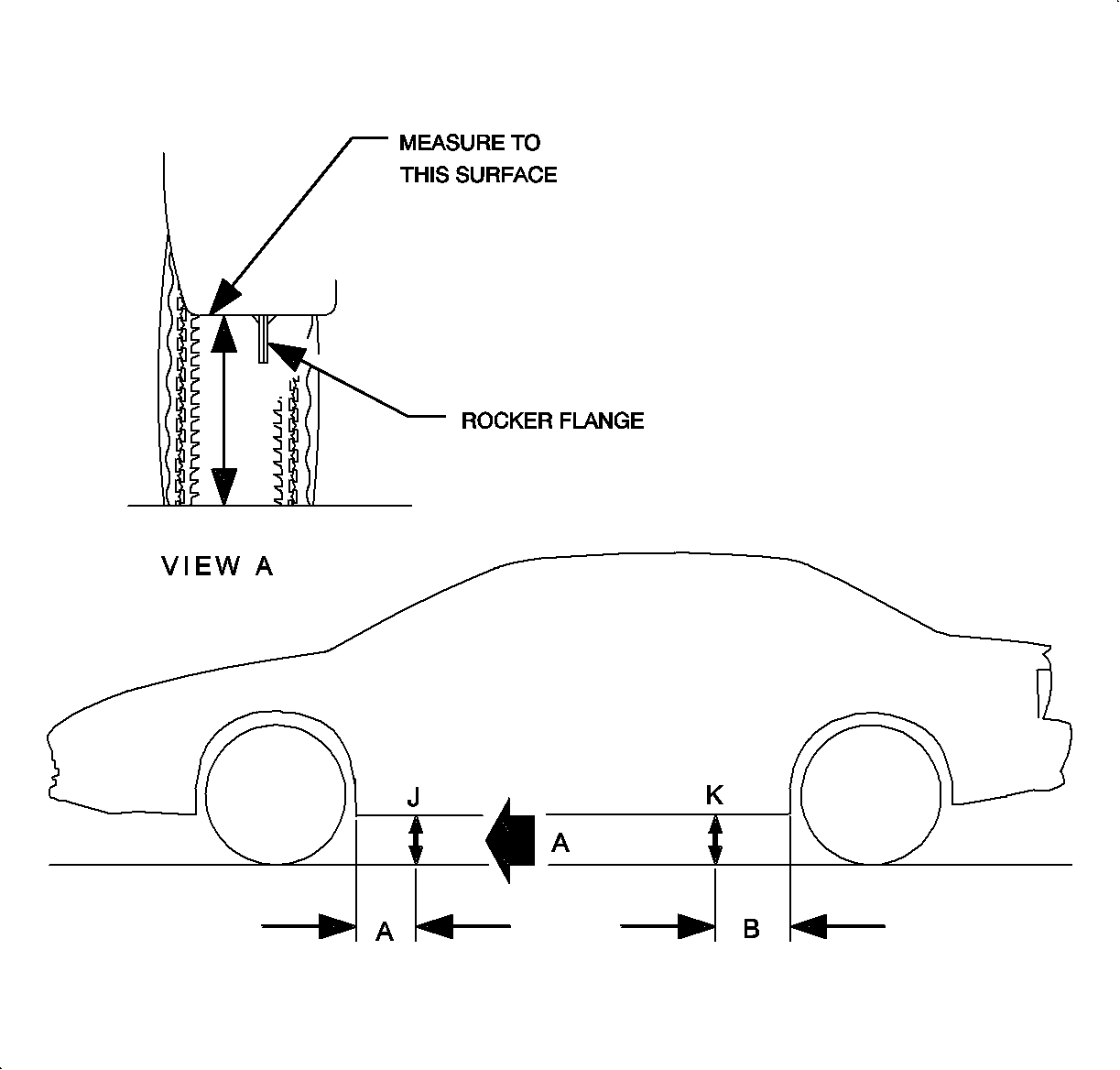For 1990-2009 cars only
- Place vehicle on a level surface.
- Adjust tire pressures to correct specifications.
- Curb trim height should be measured with:
- If vehicle fuel tank is not full, the following chart may be used to determine amount of weight necessary to be added to the trunk of vehicle to simulate a full fuel tank.
- Bounce front and rear suspensions a few times to settle suspension.
- Measure front and rear vehicle curb trim height.
Important: When measuring alignment angles, it is critical that vehicle curb trim height be correct. Measure and adjust trim height according to the following procedure before performing alignment.
| • | 207 kPa (30 psi) tire pressure -- front tires |
| • | 179 kPa (26 psi) tire pressure -- rear tires |
Fuel Level - Weight to Add
| • | 1/8 -- 31.8 kg (70 lb) |
| • | 1/4 -- 27.2 kg (60 lb) |
| • | 3/8 -- 22.7 kg (50 lb) |
| • | 1/2 -- 18.1 kg (40 lb) |
| • | 5/8 -- 13.6 kg (30 lb) |
| • | 3/4 -- 9 kg (20 lb) |
| • | 7/8 -- 4.5 kg (10 lb) |

| • | Measure from the front (A) or the rear (B) of the rocker flange to locate the curb trim height measuring points (J) and (K). |
| • | Measure curb trim height from the level surface the vehicle rests on to the bottom horizontal surface of the rocker panel. |
| Important: Do not measure from rocker/jacking flange. |
Model | A | B |
|---|---|---|
Sedan/Wagon | 117 mm (4.6 in) | 105 mm (4.1 in) |
Coupe | 150 mm (5.9 in) | 138 mm (5.4 in) |
Curb Trim Height | J | K |
|---|---|---|
Model | Front Rocker Height Range | Rear Rocker Height Range |
Sedan | 201-233 mm (7.8-9.0 in) | 202-234 mm (8.0-9.3 in) |
Coupe | 200-232 mm (7.8-9.1 in) | 201-233 mm (7.9-9.4 in) |
Wagon | 201-233 mm (7.8-9.1 in) | 202-234 mm (8.1-9.5 in) |
